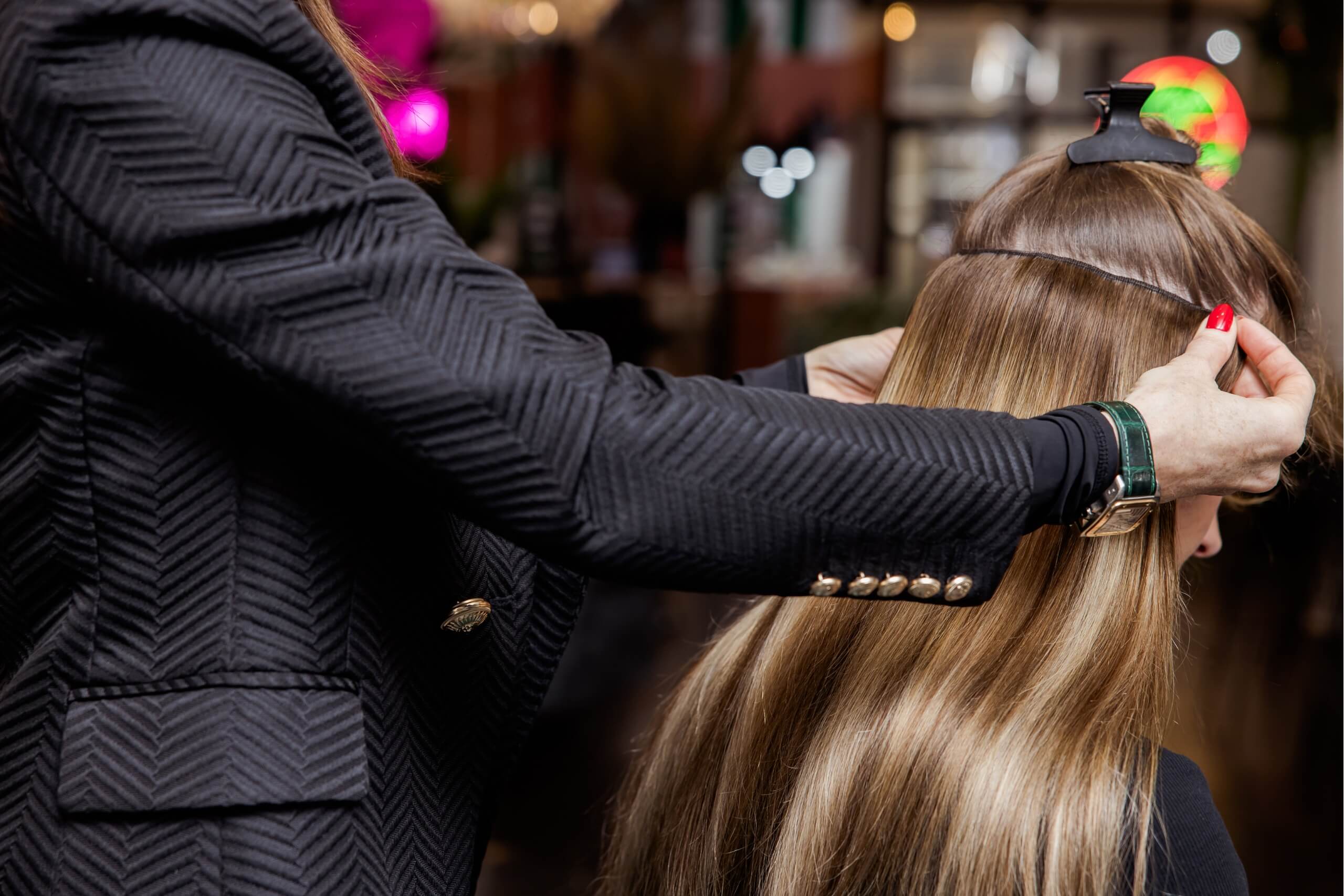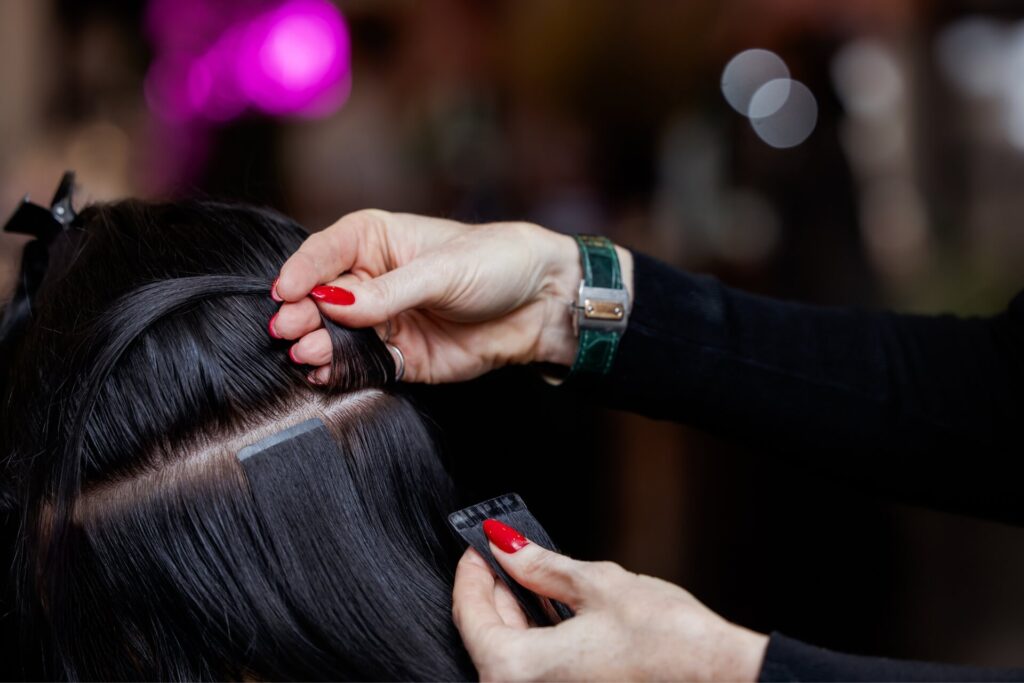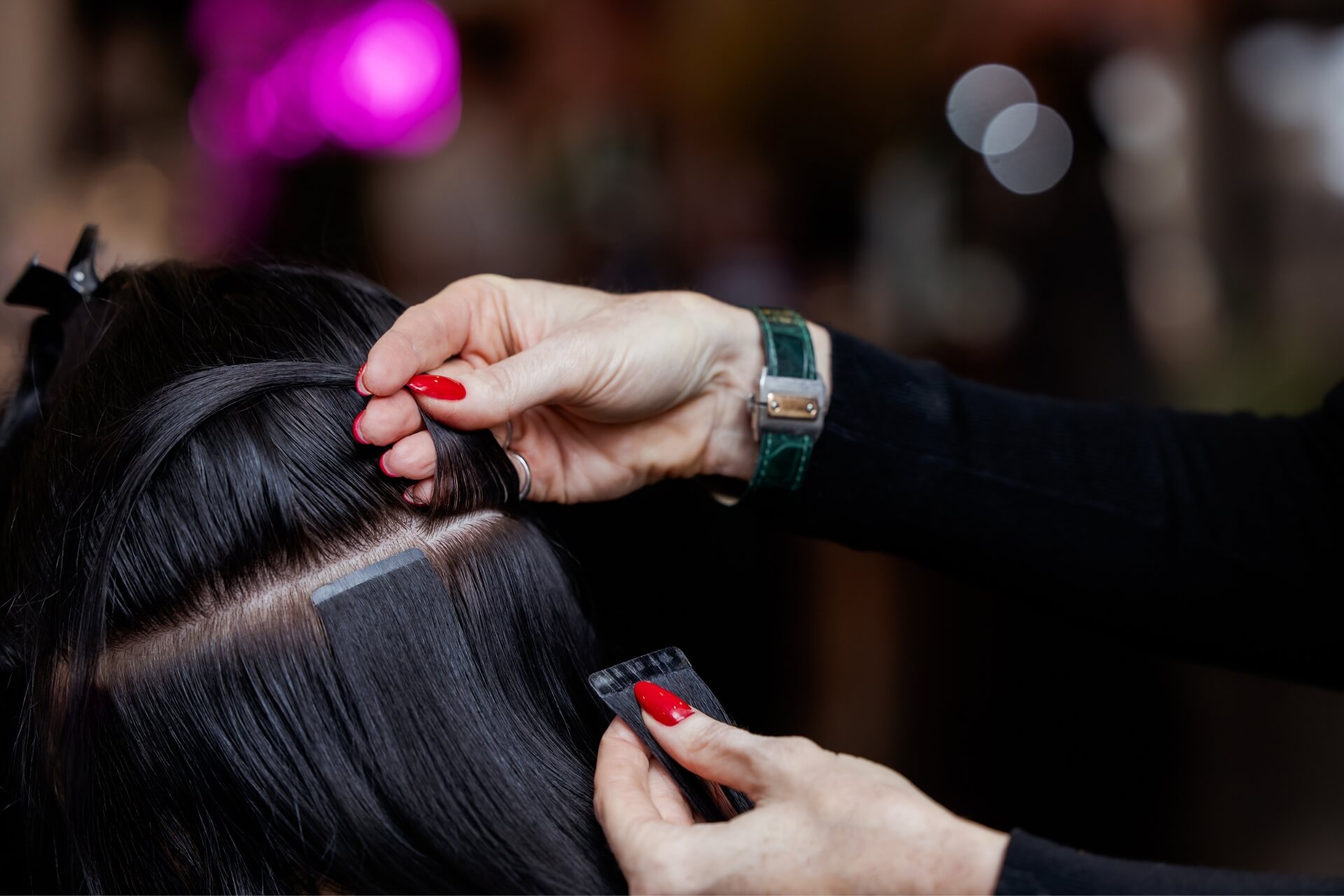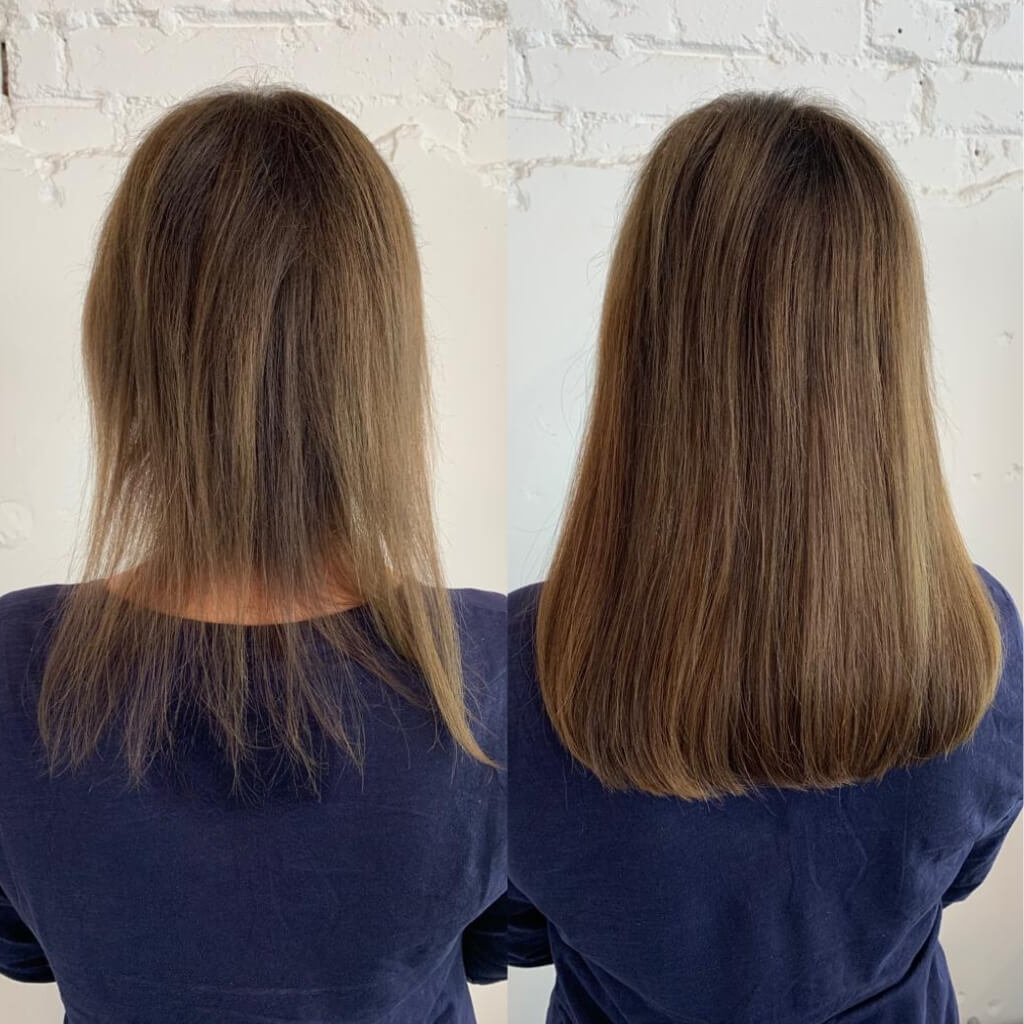Why Proper Washing is Essential
Unlike your natural hair, extensions don’t directly receive nourishing oils from your scalp. This makes them more prone to dryness, tangling, and damage. Proper washing helps to:
- Prevent tangles and matting: Keeping extensions clean and conditioned helps prevent knots, protecting your extensions and natural hair.
- Maintain shine and softness: Washing restores your extension’s natural shine by removing product buildup.
- Prolong lifespan: Proper care helps your extensions last longer and keep their natural-looking appearance.
Preparation Before Washing
1. Brush Your Extensions First

Gently detangle your hair extensions before washing. Use a wide-tooth comb or a special loop brush designed for extensions. Start at the ends and gently work up to avoid pulling on the attachments.
How to brush hair extensions like a pro
2. Choose the Right Products

- Shampoo: Opt for a sulfate-free shampoo. Sulfates can strip away moisture, leaving extensions dry and brittle.
- Conditioner: A lightweight, moisturising conditioner is key. Look for products specifically designed for extensions.
- Avoid: Products with alcohol, synthetic oils, or heavy silicones. These can dry out extensions and weigh them down.
A Guide to Shampoo and Conditioner for Hair Extensions – Dos & Don’ts
3. Prepare Your Tools
Make sure you have the following to hand:
- Wide-tooth comb or loop brush
- Microfiber towel (gentler on hair than regular towels)
- Heat protectant spray (if you plan to heat style)
How to wash hair extensions step-by-step
Step 1 – Wet your Hair
- Use lukewarm water and let it flow downward from roots to ends.
- Avoid flipping your hair upside down, which can cause tangling.
Step 2 – Apply Shampoo
- Dispense a small amount of sulfate-free shampoo into your palms.
- Apply it gently through the mid-lengths and ends using downward strokes.
- Avoid scrubbing the roots or attachment points to prevent loosening.
- Rinse thoroughly with lukewarm water.
Step 3 – Apply Conditioner
- Focus on mid-lengths and ends (not the roots or bonds).
- Let it sit for 3-5 minutes before rinsing thoroughly.
- If you have tape-in or bonded extensions, avoid applying conditioner near the adhesive areas.
Step 4 – DRYING YOUR HAIR EXTENSIONS
- Pat hair dry with a microfiber towel (avoid rubbing).
- Air drying is the best option to prevent damage.
- If blow-drying, use a cool or low heat setting and a diffuser attachment.
Step 5 – Detangle and Style
- Once dry, gently detangle with a wide-tooth comb.
- If using heat styling tools, always apply a heat protectant spray first.
Tips for Washing Specific Types of Hair Extensions
Clip-In Extensions

- Always remove clip-ins before washing.
- Lay them flat on a clean surface and wash them gently.
- Air-dry them completely before reattaching them.
Tape-In Extensions

- Be cautious when washing near the tape adhesive areas.
- Avoid applying conditioner close to the tapes to prevent them from loosening.
Bonded Extensions

- Use a loop brush to detangle carefully around the bonds.
- Avoid excessive rubbing near the bonded areas to protect the attachments.
How Often Should You Wash Hair Extensions?
In general, hair extensions should be washed 2-3 times per week to ensure they stay in good condition and last as long as possible. Overwashing hair extensions is a common mistake that can strip them of their moisture and reduce their lifespan.
Most importantly, always listen to your stylist’s advice and consider how your extensions look and feel. If they are dirty or difficult to style, it’s time for a wash.
Clip-in Extensions:
- Frequency: Every 3-5 wears is a good rule of thumb. However, if you use a lot of styling products, you may need to wash them more often.
- Why less often? Clip-ins aren’t attached to your head, so they don’t absorb as many oils from your scalp. This means they don’t get dirty as quickly as other types of extensions.
- Signs it’s time to wash: If your clip-ins feel sticky, look dull, or have product buildup, it’s time for a wash.
Tape-in Extensions:
- Frequency: 2-3 times per week is sufficient.
- Why less often? Washing too frequently can weaken the adhesive on the tapes, causing them to slip or come loose.
- Factors affecting wash frequency: If you have an oily scalp, live in a humid climate, or workout frequently, you may need to wash your tape-ins more often.
- Signs it’s time to wash: If your tape-ins feel greasy, look limp, or the tapes are starting to lose their grip, it’s time for a wash.
Bonded Extensions:
- Frequency: 3-4 times per week.
- Why more often? Bonded extensions are attached close to the scalp, so they’re more likely to absorb oils and sweat.
- Factors affecting wash frequency: Your lifestyle, scalp type, and the products you use will all influence how often you need to wash your bonded extensions.
- Signs it’s time to wash: If your bonded extensions feel heavy, look oily, or have an unpleasant odour, it’s time for a wash.
Post-Wash Care Tips
- Brush Daily: Gently brush your extensions at least twice daily to prevent tangles.
- Avoid Sleeping with Wet Hair: Ensure your extensions are completely dry before bed to prevent matting.
- Protect at Night: Secure your hair in a loose braid or ponytail to minimise tangling while you sleep.
Conclusion
Mastering how to wash hair extensions correctly is essential for keeping them soft, silky, and long-lasting. By using the right techniques, sulfate-free products, and gentle handling, your extensions will stay in top condition. Follow this expert guide to enjoy gorgeous, tangle-free hair extensions for months to come!




